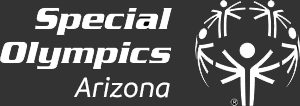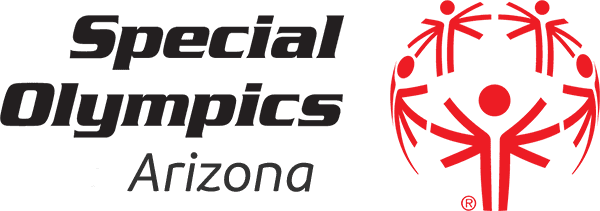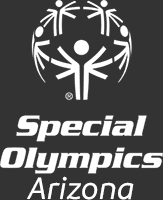What Is Down Syndrome?
What Is Down Syndrome?
Down syndrome is the most common chromosomal condition that is diagnosed in the United States. Individuals with Down syndrome have cognitive and physical symptoms resulting from an extra chromosome, causing mild to moderate intellectual disability and other deficits. Despite some physical and behavioral similarities, all individuals with Down syndrome have unique abilities.
Down syndrome is a condition where a person has an extra chromosome, either an extra copy or part of a copy of chromosome 21. These chromosomes serve as small collections of genes and affect how a baby’s body forms and functions during and after pregnancy. The extra chromosome on chromosome 21 changes how a baby’s brain and body develop, which causes both mental and physical differing abilities.
Types of Down Syndrome
There are three different types of Down syndrome, categorized by the type of chromosomal mutation present in the individual.
Trisomy 21
The most common gene mutation is Trisomy 21, which is usually caused by an error in cell division called nondisjunction. This results in an embryo that contains three copies of chromosome 21 instead of the usual two. This nondisjunction occurs either prior to or at conception, when a pair of 21st chromosomes fail to separate. This will replicate in every cell in the body, resulting in Trisomy 21. Trisomy 21 accounts for 95% of all cases of Down syndrome.
Mosaic Down Syndrome
Mosaic Down syndrome occurs when there is a combination of two types of cells in the body: those with the standard 46 chromosomes and those with 47 chromosomes, which contain the extra 21st chromosome. Due to the combination of 46 and 47 chromosome cells, individuals with mosaic Down syndrome may display fewer symptoms of Down syndrome. Due to differing abilities among individuals with Down syndrome, these generalizations are difficult to make. Mosaic Down syndrome is the least common, accounting for only 2% of cases.
Translocation Down Syndrome
Translocation Down syndrome occurs when the total number of chromosomes in the body’s cells remains 46, but an additional full or partial piece of chromosome 21 has attached to another chromosome, generally chromosome 14. The presence of this extra full or partial chromosome results in symptoms of Down syndrome. Translocation accounts for 3% of Down syndrome cases.
Down Syndrome Signs & Symptoms
Intellectual and Developmental Symptoms
Cognitive impairment may range from mild to severe in children and adults with Down syndrome. Other intellectual and developmental symptoms include:
- A shorter attention span
- Poor judgment and decision making skills
- Impulsive behavior
- Delayed or slower learning compared to peers
- Delayed language abilities or speech development
Physical Symptoms
Down syndrome can be characterized by physical symptoms that are often recognizable. Some physical symptoms of Down syndrome include:
- A flattened face, especially the bridge of the nose
- Almond shaped eyes that slant up
- A short neck
- Small ears
- Small hands and feet
- Poor muscle tone or loose joints
- A single line across the palm of the hand, known as the palmar crease
- Tiny white spots on the iris of the eye
- Shorter in height as children and adults
- A tongue that tends to stick out of the mouth
What Causes Down Syndrome?
When it comes to the causes of Down syndrome, doctors understand that the extra 21st chromosome is the reason for Down syndrome symptoms and deficits; however, they do not know exactly what causes this extra chromosome. It is often referred to as a spontaneous disease, although doctors do know that age may increase the chances of having a baby develop Down syndrome. Mothers over the age of 35 have increased chances of this spontaneous extra chromosome.
Treatment for Down Syndrome
Down syndrome is a lifelong condition that can cause delays and difficulties for individuals, but there are many services and treatments that can help children and adults thrive with Down syndrome. Early in life, treatments and services will often be used to help babies and children improve their physical and intellectual abilities, including walking, talking, and relating with their peers. These services are used to help children reach their full potential. The different types of treatments include speech and occupational therapy to help with developmental and communication deficits, and physical therapy, which helps with some of the physical challenges that individuals with Down syndrome face. These treatments and services are typically offered through early intervention in each state.
There are other treatment options for individuals with Down syndrome that can persist throughout their lifetime, including specialized education services, social and recreational activities, and vocational and skills training to help individuals with Down syndrome become independent.
How Common Is Down Syndrome?
Down syndrome is the most common chromosomal condition; according to the CDC, approximately 1 in every 772 babies born in the United States is born with Down syndrome. About 5,100 babies are born with Down syndrome in the U.S. each year.
What To Do if You Think Your Child May Have Down Syndrome
Down syndrome is a recognizable medical condition that will likely be diagnosed either prior to or immediately after the birth of a baby. There are certain screening and diagnostic tests that happen prenatally that can detect the extra 21st chromosome and provide parents with a diagnosis of their baby prior to birth. A postnatal Down syndrome diagnosis will usually occur due to recognizable physical traits and medical tests. If you suspect your child may have Down syndrome, you can work with your pediatrician to determine a diagnosis and the best course of action. A doctor can refer you to a specialist and specialized services to aid in providing the best care for your child.



